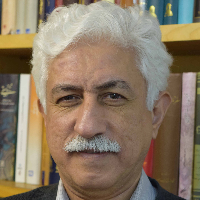The Idea of Non-Historical Essence of Islamic Architecture of Iran: A Critique of Two Viewpoints (the Sense of Unity and Khesht va Khiyāl)
Among the scholars of Iranian architecture, some believe in a timeless “essence” as “Iranian Architecture” or “Islamic Architecture of Iran”. According to them, the essence has had various manifestations in different points of history. It can also have its contemporary manifestation if we try to identify and realize it, as they believe. Then we will have our own Persian, Islamic, and non-Western architecture in our time. What defines the essence are some “principles of architecture”. The principles differ by the scholars’ viewpoints; however, all of them are timeless principles and rules the observation of which can lead to an Iranian Islamic architecture suitable for Iranians spiritual, psychological, and physical needs and desires. Among the scholars, there are only three comprehensive viewpoints that are compiled and published: 1. Mohammad-Karim Pirnia’s “the Principles of Iranian Architecture”; 2. Ardalan and Bakhtiar’s “the Sense of Unity”; 3. Navaei and Haji-Qassemi’s “Khesht-o-Khiyāl”. A full analysis and critique of the first viewpoint was already published. In this article, we will analyze and criticize the two latter, both of them believe in an essence as “Islamic Architecture of Iran”. Reviewing and internal criticizing each viewpoint starts with explaining its goal and theoretical bases and continues by its principles. Then we will articulate the viewpoint in terms of ontological, epistemological, and practical/normative propositions. This will provide us with a site map of each viewpoint that will make a fair critique possible. The last part of each chapter, entitled “Challenges and Inconsistencies”, will be on an internal criticism on the viewpoint. In the conclusion, we will compare the two views and show that both of them are deeply related to “traditionalism”, and their main difference is due to their focus points: Ardalan and Bakhtiar focus on the symbolic language of architecture, while Navaei and Haji- Qassemi focus on the formal and physical aspects.
- حق عضویت دریافتی صرف حمایت از نشریات عضو و نگهداری، تکمیل و توسعه مگیران میشود.
- پرداخت حق اشتراک و دانلود مقالات اجازه بازنشر آن در سایر رسانههای چاپی و دیجیتال را به کاربر نمیدهد.


